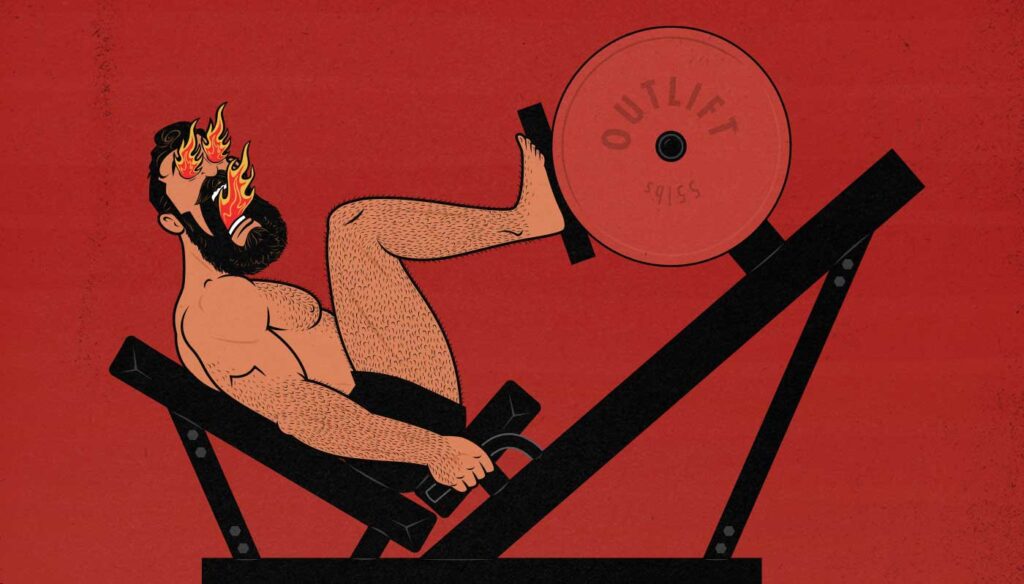
Is High-Intensity Training (HIT) Good for Building Muscle?
High-intensity training (HIT) proposes that we can gain muscle size and strength faster and more efficiently if we keep our workouts short, infrequent, and brutally intense. It’s not the most popular way to build muscle, but it’s had a loyal following for the past 50 years and shows no signs of giving up.
During these past 50 years, though, thousands of muscle-building studies have been published, and many of them have looked into the principles that define HIT. So, how many sets should we do per exercise? How often should we be training? Should we lift to failure?
Most of all, is HIT good for building muscle?
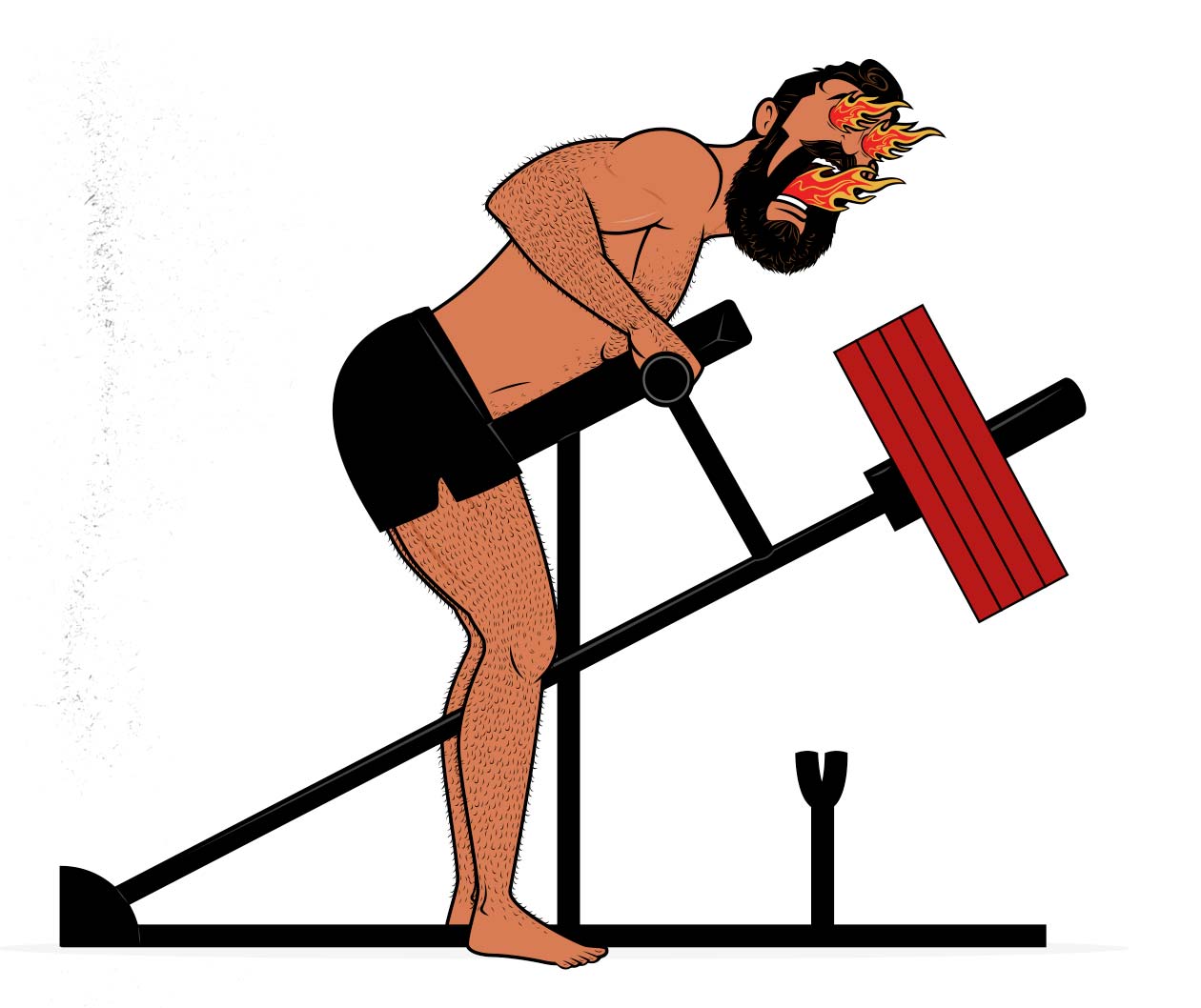
What is High-Intensity Training (HIT)?
High-intensity training (HIT) was popularized in the 1970s by Arthur Jones, the creator of the Nautilus exercise machines. It was further promoted by the famous bodybuilder Mike Mentzer in his Heavy Duty Training System.
With strength training, “intensity” usually refers to how much weight is on the bar—how heavy you’re lifting. With bodybuilding, though, intensity more often refers to how close to failure you take a lift. Arthur Jones and Mike Mentzer were famous for advocating that bodybuilders train beyond muscular failure, and so their style of training became known as high-intensity training.
High-intensity training is built around a few different principles:
- Brief, Infrequent, and Intense: With conventional hypertrophy training, lifters typically stop 0–3 reps shy of failure, do 3–6 sets for each exercise, and train each muscle 2–3 times per week. With HIT, though, the idea is to keep the workouts brief, infrequent, and intense. You might do a single set of each exercise, take that set beyond muscular failure, and then rest until your muscles are fully recovered, which might take upwards of a week.
- Slow and methodical lifting: HIT is also known for using slower lifting tempos. With conventional hypertrophy training, you lift the weight explosively and then lower it back down under control. The lifting portion (the concentric) might take 1–2 seconds, and the lowering portion (the eccentric) might take 2–3 seconds. With HIT, you’d slow it down, taking 3+ seconds to lift the weight and 4+ seconds to lower it. You might even add pauses. This forces you to use lower weight, but it also gives your muscles a greater time under tension.
- Exercise machines: Finally, HIT is known for using exercise machines. The idea is that using exercise machines can help keep the risk of injury low when taking your sets to failure and beyond.
Since the 70s, HIT has stayed popular among bodybuilders who want to build muscle with short, minimalist workouts. Most bodybuilders eventually come across Mike Mentzer’s bodybuilding workouts and HIT lectures. Mentzer is a smart and charismatic guy, and he offers a compelling approach to building muscle.
HIT training is also popular among casual lifters. It’s been featured in mainstream fitness books like The 4-Hour Body by Tim Ferriss and Body by Science by Doug McGuff. It’s never been the most popular way to build muscle, but it’s always had a loyal following.
HIT Workout Routine
There are a few different ways of doing high-intensity training, but most of them emphasize doing full-body workouts, exercise machines, taking each set to total muscular failure, and lifting the weight forcefully and then lowering it slowly.
Here’s what a sample workout routine might look like:
HIT Workout 1
The first workout is a full-body workout that emphasizes the big compound lifts. These lifts are done using machines instead of free weights. The idea is that exercise machines make it safer to take our lifts to failure.
| Exercise | Sets | Reps Range |
|---|---|---|
| Leg Press | 1 set | 8–10 reps |
| Leg Curls | 1 set | 8–12 reps |
| T-Bar Row | 1 set | 8–12 reps |
| Chest Press | 1 set | 8–12 reps |
| Biceps Curls | 1 set | 10–15 reps |
| Overhead Extensions | 1 set | 10–15 reps |
Every set in this workout is taken to total muscular failure. 2–4 days later, when your muscles stop feeling sore, you can do the next workout. Ideally, once you get into the swing of it, you’d be doing these workouts three times per week.
HIT Workout 2
The second workout is also a full-body workout, but this time we’re using different compound lifts. The idea is to vary the stress on our muscles, joints, and tendons, reducing our risk of injury and stimulating more balanced muscle growth.
| Exercise | Sets | Reps Range |
|---|---|---|
| Romanian Deadlifts | 1 set | 10–15 reps |
| Leg Extensions | 1 set | 8–12 reps |
| Underhand Lat Pulldown | 1 set | 8–12 reps |
| Shoulder Press | 1 set | 8–12 reps |
| Chest Fly Machine | 1 set | 10–15 reps |
| Skull Crushers | 1 set | 10–15 reps |
You don’t need to use those specific exercises. You can do High-Intensity Training with free weights. Instead of the leg press, you could do front squats. Instead of underhand land pulldowns, you could do chin-ups. Instead of t-bar rows, you could do barbell rows.
However, if you’re training with free weights, it may be wiser to do 2–3 sets per exercise and stop 0–3 reps shy of failure. That will keep your training safer, stimulate more muscle growth, and give you more practice with the lifts.
The Research on HIT
The Ideal Training Volume
Some studies, such as this review by Steele and Fisher, say we can gain similar amounts of strength from doing a single set as we would from doing multiple sets. With that said, the best research we have on training volume shows that the more sets we do, the faster we build muscle, at least to a point. For instance, this meta-analysis by Schoenfeld and Krieger—two of the most respected hypertrophy researchers—found that we can expect to build at least a bit more muscle with each additional set we do.

If we look at the study by Radaelli, Botton, et al. that found a benefit to doing fewer sets, it was a study done on older women. If we look at the other study by Radaeli et al.—the one that found a large benefit to higher training volumes—we see a study done on men who were new to lifting weights. This may hint at the fact that our ability to recover from hard training decreases at a certain age, so we should lower our training volumes. Mind you, lowering our training intensity instead—stopping our sets further from failure—might be even wiser, as it would reduce the risk of injury. And again, if we look at the research overall, we see a strong trend for more sets stimulating more muscle growth.
Furthermore, some of the research favouring lower training volumes is suspicious, and after being questioned by prominent researchers like Greg Nuckols, James Krieger, and Brad Schoenfeld, it’s been retracted. For instance, this paper by Barbalho et al. recommended lower training volumes. The results reported appeared to be fraudulent. Upon closer investigation, the study was retracted.
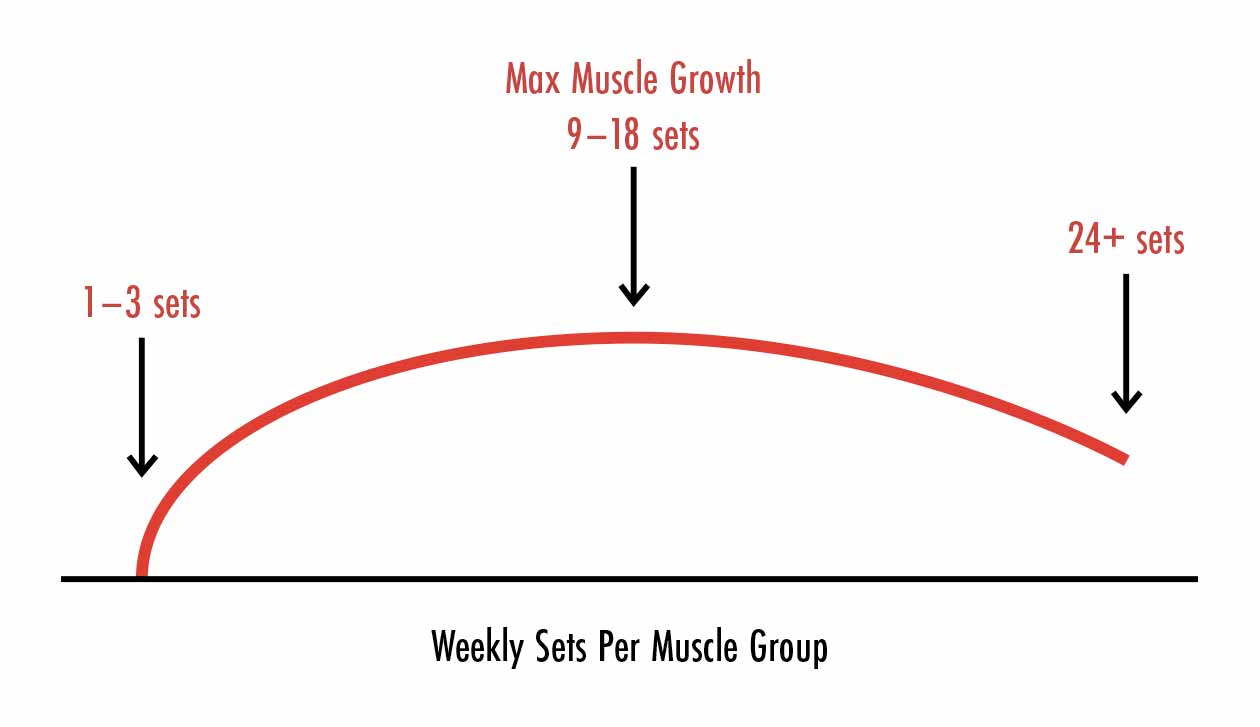
If we look at the research overall, it seems that some people can build muscle with 1–3 hard sets per exercise per week, depending on their genetics and training history. However, people build muscle faster and more reliably by doing more than that, with muscle growth seeming to peak at around 9–18 sets per muscle group per week. After that, the benefits of doing extra sets tapers off. At a certain point, doing more sets begins to interfere with recovery, and so each additional set begins to yield less muscle growth.
The Ideal Lifting Intensity
If we look at the effect of training intensity on muscle growth, the results are mixed and unimpressive. This is especially true for intermediate lifters, with compound lifts, and when doing more than one set per exercise (Santanielo, Carroll, Lacerda, Pareja-Blanco 2, Pareja-Blanco 3):
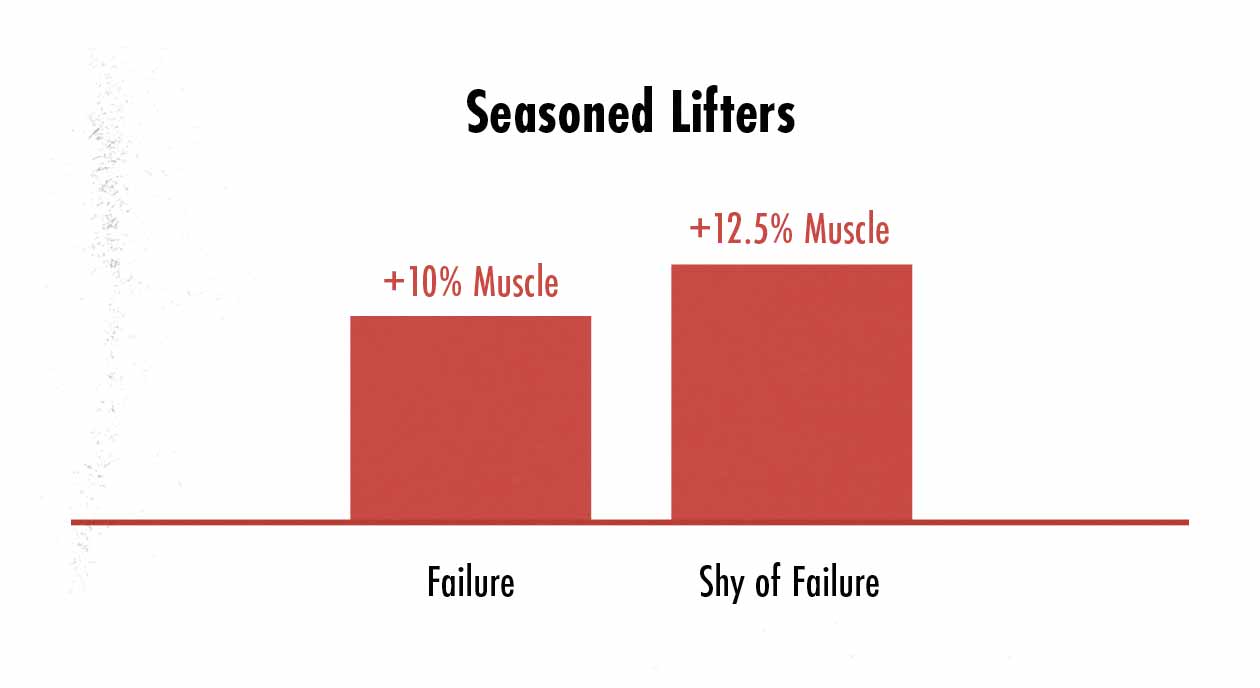
With beginners doing isolation lifts, though, we see an advantage to taking sets all the way to failure (Helms, Sampson, Pareja-Blanco 1, Nóbrega, Lasevicius):
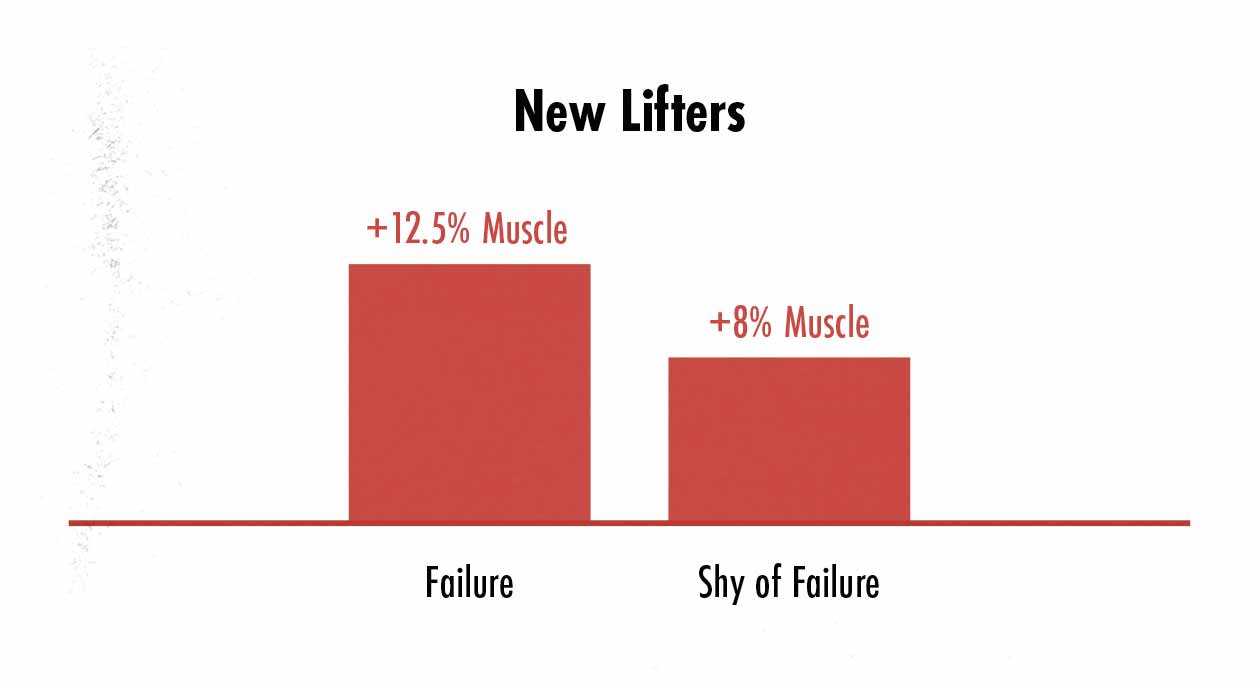
Overall, as a rule of thumb, it’s a good idea to leave 0–3 reps in reserve when doing our compound lifts. For beginners, stopping shy of failure keeps the lifts safe and helps develop better lifting technique, though it won’t yield extra muscle growth. For intermediate lifters, stopping shy of failure actually seems to stimulate more muscle growth, perhaps by causing less muscle damage, and thus leaving more resources available for muscle growth. However, with HIT, there’s only one set for each exercise, and so muscle damage is already minimal.
With isolation lifts, there’s little harm in taking them to failure, especially on the final set of each exercise. With beginners, it can stimulate more muscle growth. With intermediates, it helps to keep training effort consistent and makes tracking strength gains easier. If you’re doing HIT, you’re only doing one set per exercise, and so taking that one set to failure makes total sense.
With high-intensity training, since the training volume is so low, it makes sense to take your sets all the way to failure. Muscle damage will be low because of the lower training volume. May as well attempt to stimulate a bit of exrta muscle growth by lifting harder. Still, the benefits of that extra intensity are likely modest at best.
Is HIT Good for Building Muscle?
High-intensity training does have some good logic behind it. When we’re doing just a single set per exercise, there’s less risk of causing excessive muscle damage, so it makes sense to push that set harder. When we push that set harder, we stimulate a bit more muscle growth than we would by stopping a few reps shy of failure. So if you only have enough time to do one set per exercise, it does indeed make sense to train with a higher intensity.
The Advantages of HIT
HIT isn’t a bad way of training, and there’s a reason why it’s had such a loyal and consistent following these past 50 years:
- The workouts are shorter.
- We stimulate more muscle growth per minute spent training.
- Our muscles, joints, and tendons get less beat up and have plenty of time to recover.
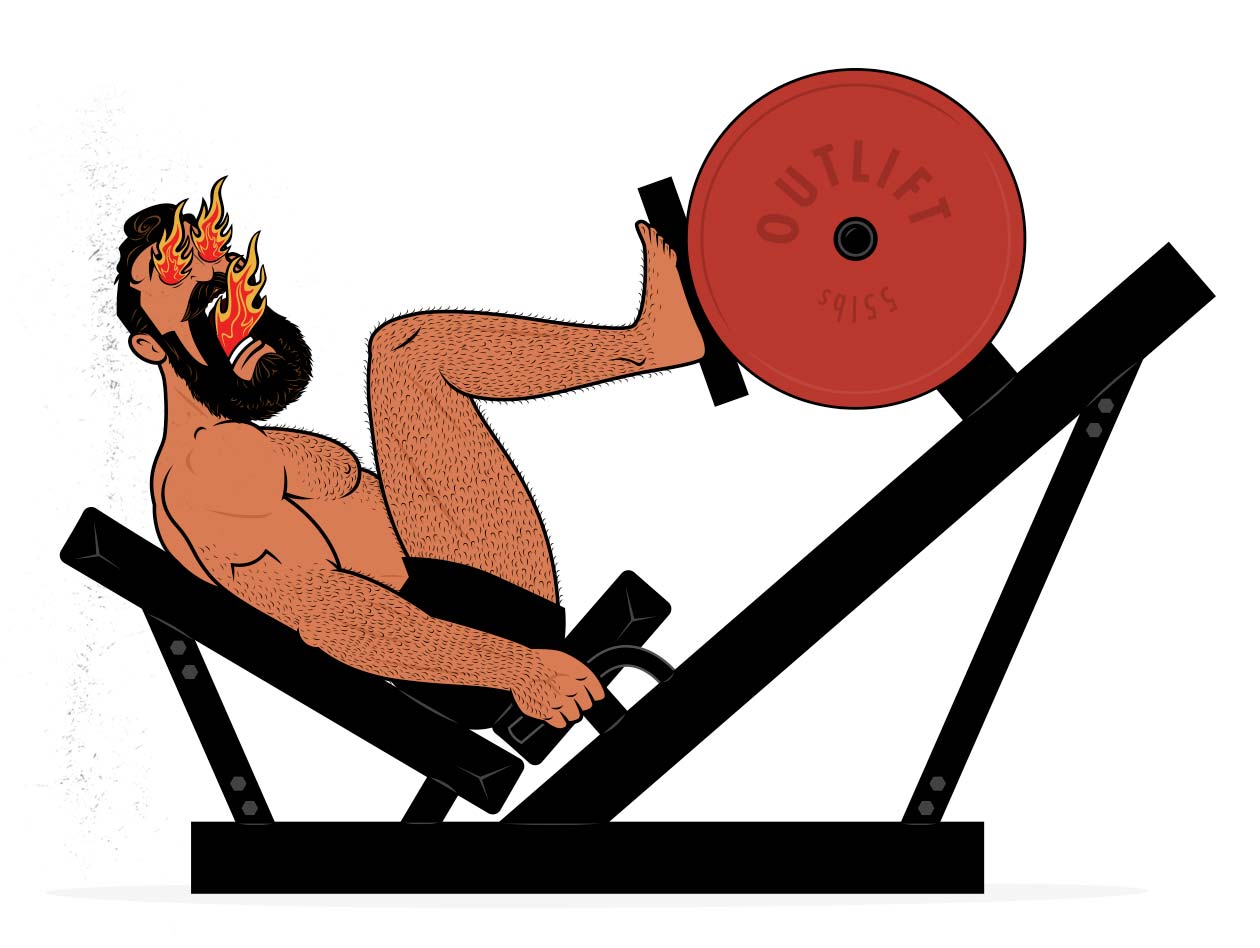
The Disadvantages of HIT
Just because HIT is a good way of stimulating muscle growth, though, doesn’t mean that it’s the best way. If we compare high-intensity training against conventional hypertrophy training, it has a few notable disadvantages:
- Doing one set per exercise isn’t enough to maximize your rate of muscle growth. Doing more sets builds muscle faster.
- Shorter workouts means less time spent exercising. Minimizing the amount of time spent exercising isn’t ideal for your health.
- Even with lower training volumes, taking sets all the way to failure (and beyond) can increase your risk of injury, especially if you’re doing the big compound barbell lifts.
- You get less practice with each lift, making it harder to improve your technique.
So although some people prefer HIT, and although it is indeed quite efficient, it’s not the most effective way to build muscle. You’d build muscle faster by stopping your sets 0–3 reps shy of failure, doing more sets per exercise, and training your muscles at least twice per week.
Summary
High-intensity training can be a good way to build muscle with short, minimalist workouts. However, conventional hypertrophy training (doing more sets and stopping just shy of failure) tends to be better for building muscle, has a lower risk of injury, and will have you doing more overall work—more exercise—which is better for your health.
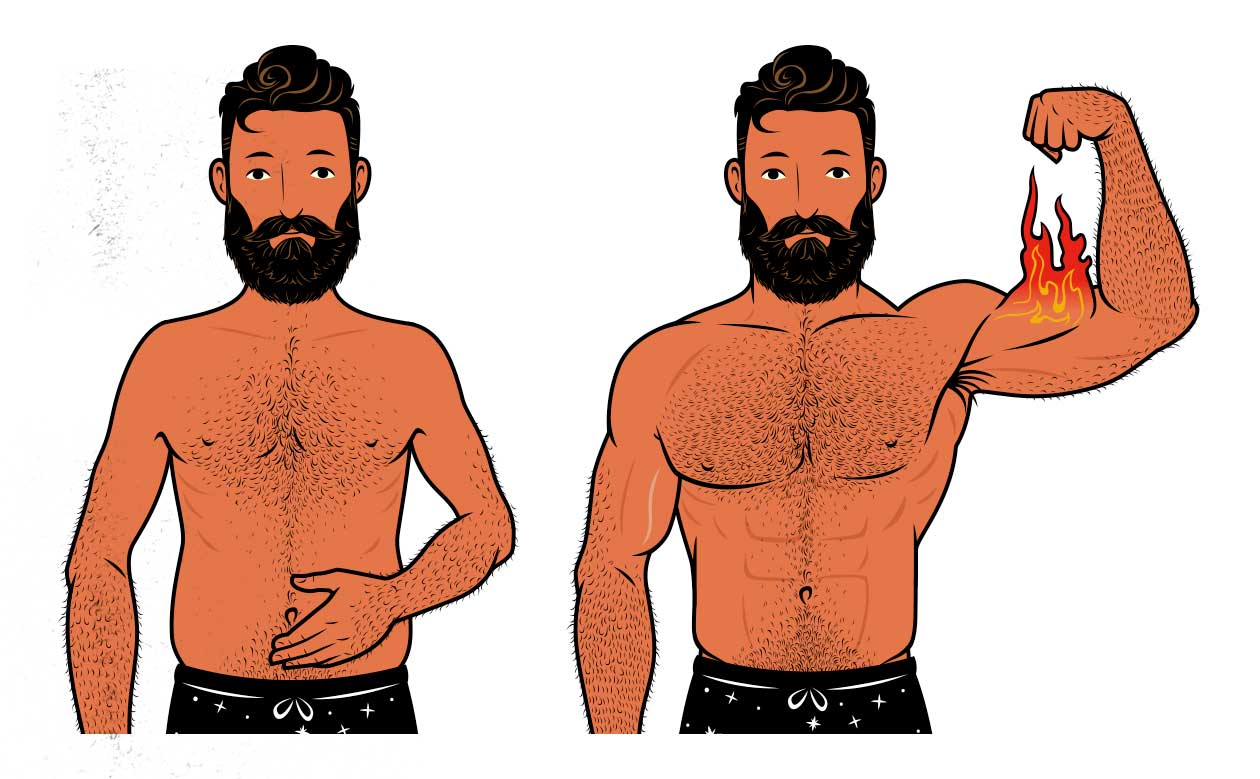
If you want to spend less time working out, I’d recommend doing supersets, drop sets, and using shorter rest times. Your workouts will still be short and hard, but you’ll stimulate more muscle growth, your risk of injury will be lower, and the workouts will be better for improving your health. Overall, you’ll get better results than you would from doing HIT.
With that said, it’s often a good idea to experiment with several different styles of weight training. Even if HIT isn’t the best default way to lift, it might still be worth trying for a few months. Perhaps it will challenge you in a new way, spurring on new muscle growth. Or perhaps you’ll realize that you prefer it.

If you want a customizable workout program (and full guide) that builds in these principles, check out our Outlift Intermediate Bulking Program. Or, if you’re still skinny or skinny-fat, try our Bony to Beastly (men’s) program or Bony to Bombshell (women’s) program. If you liked this article, you’d love our full programs.



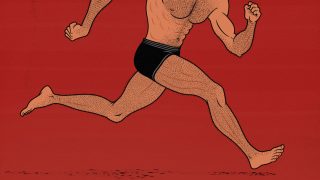
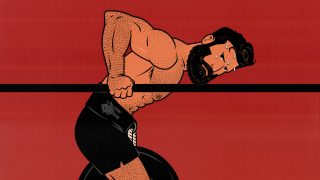
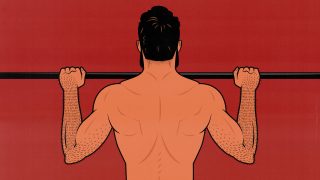
Hi Shane,
Some good points here. As a HIT advocate (about 8 years now) who did traditional training for years before that, I’d say that the reasons I prefer HIT are the following:
1) safety. Once I got over 35 or so, my joints started to hurt more with traditional lifting speeds. Part of this is the sheer forces of free weight moved at traditional speed. Because the speed is higher, a lot more weight can be moved via momentum forces. The downside is that all that weight can take a toll on your joints, and over time subacute damage occurs. That’s one reason why a lot of lifters over 40 have a host of joint issues and trying to find some way (bodyweight, bands, HIT, etc) to keep training. Because the HIT movements are slow, it forces safety, as the slow speed necessitates much lighter weight. One example is pullups.. I wasn’t able to do traditional speed pullups/chinups because of shoulder pain. Slowing them way down (I do 10 seconds up, 10 seconds down for each rep) has allowed me to return to them (and made them much much more difficult to perform).
2) efficiency (as you noted). Because a slow tempo decreases momentum, it decreases the load needed to overload the muscle. You can reach muscle failure with a much lighter load, which in addition to safety, allows simpler movements and simpler equipment to be used effectively. Instead of 100’s of pounds, 10’s of pounds are effective (including just bodyweight moves taken very slowly like pushups). This is cheaper, more portable, etc. The single set (as you noted) makes for a quicker workout, saving a lot of time (which is maybe the most precious resource we have). Heart rates still get plenty high during the workouts though. My resting and active heart rate are actually better than when I trained traditionally.
3) Still a good workout (without the nagging joint issues that can turn into serious injuries over time). I’m maintaining my strength and size and continuing to get stronger (using a mix of free weights, bands, bodyweight) as an older lifter. Hope this helps somebody else!
Those are great points, Matt!
I think one of the most underrated aspects of lower-volume training is that it beats up the joints much less. In my own training, I bump up the volume when I’m eager to build more muscle. But during periods of maintenance (which is most of my life), I’m not trying to do as much volume as I can handle, I’m trying to do the minimum amount of volume that works.
Using a slower lifting tempo can also be easier on the joints. That’s true. It’s a great solution for people with achy or cranky joints. Another solution is to use higher rep ranges.
The only thing I’d add is that taking sets to absolute failure isn’t the safest way to lift. If someone wanted to prioritize safety and longevity, I’d probably recommend doing 2–3 sets and stopping 2–3 reps away from failure.
You make great points.
> The only thing I’d add is that taking sets to absolute failure isn’t the safest way to lift.
Why? Absolute failure, when well executed, is at least as safe as multiple non-failure series. Indeed, following the SuperSlow protocol is one of the safest ways to train.
Where is the logic in the affirmation that multiple non-failure series are safer than only one series?
Lifting is pretty safe, especially when compared with other forms of physical activity, such as sports, jogging, whatever. An increase in risk isn’t necessarily a huge deal, especially on lifts where the risk is very low to begin with. Like, taking a 12-rep set of biceps curls to failure isn’t anything to worry about. And if you’re lifting with great form, taking a 12-rep set of squats to failure probably isn’t anything to worry about either.
The problem is that we fail some lifts because our stabilizer muscles give out. For instance, if you fail your sets of deadlifts because your lower back gives out. That can put more stress on your spine in a compromised position. In that case, it might be wiser to avoid taking those sets to failure. Better to stop while your form is still solid.
Some people’s form degrades quite a bit as they approach failure, too. Might pull a muscle that way. Again, I’m not saying it’s super dangerous or scary or anything, just not always the safest way to lift. You could argue that failure is when form degrades, so someone who keeps lifting after their form breaks down is lifting PAST failure. That can be true. It depends on how you define failure. But when giving lifting advice online, it’s risky to assume that people are expert lifters who know exactly what safe technique looks like and exactly when to stop.
When doing multiple sets shy of failure, your form is always solid. Stabilizer muscles are always holding up. There’s very little risk of sustaining even minor injuries. It’s a conservative, safe way to lift.
I routinely take my isolation lifts to failure. Sometimes I’ll fail a compound lift, too (usually by accident). In our programs, we tell people not to be afraid to push themselves. I really don’t want to freak people out. I just want to be open about the possibility that taking some lifts to failure can make them a bit riskier sometimes.
For some anecdote, I know a couple of people who have gotten minor injuries (such as strained necks, pulled muscles) from doing slow training to failure. I’ve also seen guys get hurt attempting 1-rep maxes and grinding sets to (or past) failure. I dislocated my shoulder once when taking a set of dumbbell overhead presses to failure. I kinked my neck when taking a set of neck extensions to failure. I also hurt my back when I failed a set of weighted push-ups (because my abs gave out). All of those injuries were minor. No big deal. But I almost never hear of guys getting hurt when stopping shy of failure. Mind you, if you routinely stop too far shy of failure, it can be harder to stimulate muscle growth.
It could also be that you’re right. I can dig a bit deeper into it.
I was all-in on powerlifting for a long-time but started varying my workouts recently. HIIT workouts are a go-to, especially if I can only get a quick session in. I’ve also found it very helpful to mix up my workout styles (i.e. HIIT and powerlifting). Feels like a more well-rounded approach to fitness. Great write-up!
High Intensity Training is different from High Intensity Interval Training. I suggest you look up the difference.
[…] 1973, he introduced his most famous idea: High-Intensity Training (HIT). The idea behind HIT is that you do a single set for each exercise, moving the weight extremely […]
I appreciate the open mind approach to these studies. In my own experience, I have found the truth to be somewhere in the middle. It doesn’t have to be one or the other, as different things work at different times. It’s good to have as many tools in your box as possible. It’s through experimentation that we come to know what works best for us.
I totally agree 🙂
Didn’t see a comment on this, but I think Mike Mentzer and Dorian Yates 1 set to failure is taken out of context. It’s true, yes, on the last set, it’s to failure, but you are still using ascending warm sets. Never jump from walking into the gym and doing 1 set on max to failure, it’s a recipe for injury. It’s more around 3 sets of 4-16 reps sub maximal to get your nervous system and muscles primed and ready for the HIF set; my max progressive overload weight right now is 110lbs on the prone hamstring curl, but I do 16 on 10lbs (hello, wake up, get ready set, ramp up on the roller coaster,) 6 on 40lbs and 4 on 80lbs and to failure on 110 (reps vary, but to failure is the key.) My joints feel better than ever and my growth and overall wellness is much better than the higher volume routine. Thinking about it, it’s maybe confusing to your muscles, are we lifting for endurance with high volume and adapting to that or using an exact stimulation technique to grow larger to handle a larger load. I think you’d need more protein for contraction thus modulating fibers than can do both slow/fast twitch to do more of the fast twitch type than the high volume which may require different adaptations.
Hm. It’s normal for lifters to use warm-up sets before their working sets. If someone is doing 1 hard set, they might have 3 warm-up sets beforehand. If they’re doing 4 hard sets, they’ll still have those warm-up sets. At least on the big lifts at the beginning of a workout, anyway. I’m not sure that changes the context of HIT training.
Those warm-up sets are prudent, certainly, but I don’t think they’re challenging enough to stimulate a significant amount of muscle growth. I think it’s your hard working sets that are responsible for the great gains you’re getting. What you’re doing sounds great, by the way. Congrats on the continued progress!
I think people feel better on lower-volume routines because they’re less stressful and less fatiguing. Think of any type of strenuous work, mental or physical. Compare 1 hour of that work against 5 hours of that work. If you do those 5 hours of work, you’ll feel much more tired by the end. That isn’t good or bad, it’s just that working long and hard is fatiguing.
Arthur Jones and Dr. Darden created High Intensity Training that incorporated one set to absolute failure (exceptions were squats and deadlifts which were done to technical failure). They believed that lifting slowly (2-3 second concentric and 3-4 eccentric) with correct technique ensured that the first few reps of the one set provided sufficient warming up. Mike Menzter and Dorian Yates HIT are derivatives.
I think they’re right about earlier reps serving as warm-ups for later reps. I think that’s true with moderate-to-high rep hypertrophy training in general. Warming up can still be helpful on heavier lifts and when trying to master a movement pattern, though.
I am a trainer and trained traditionally (multiple sets, never to failure), and I am a BJJ practitioner at 43yo. HIT has changed my life. I only need to train for 45 min 2x per week instead of living in the gym.
In 14 weeks I put on 180 lbs of bodyweight… but none in my face, which I take as a great sign of good weight gain. My joints are feeling the best they have in years. My legs, genetically skinny, are adding size for the first time in my life. Yes, my middle gets a little soft when I bulk, but my abs are still visible.
The reason I think HIT doesn’t work for everyone is that folks don’t like to suffer. (I do.) Training to real failure is uncomfortable or painful in the moment, and many can’t do it. I have resolved to die in the gym, each set.
HIT forces absolute presence and concentration, two things in dire need of improvement in today’s day and age. There is an old saying, “How you do anything is how you do everything.”
Presence and intensity are required to succeed in life. Why should building muscle be any different?
So, any readers out there on the fence, paint your face, grab that effing barbell (or machine handle), and train past the muscle burn until the weight starts to beat you back. That’s it. Oh yeah, go home and eat and sleep.
That’s awesome, Ryan! Congrats on the gains! Sounds like it’s going great 🙂